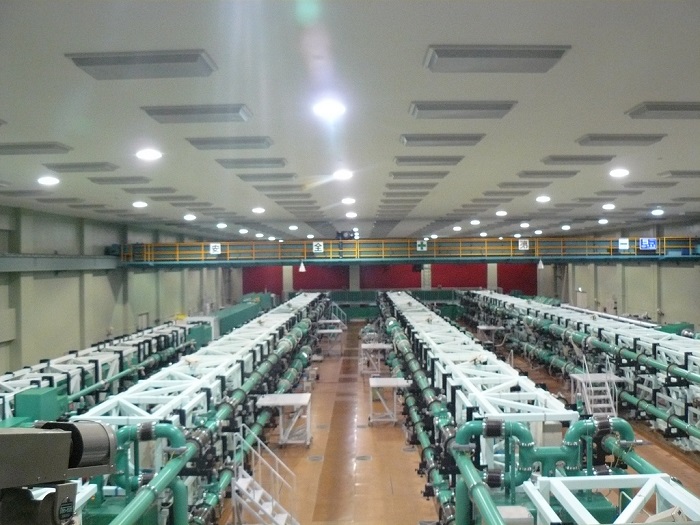The world’s most powerful laser, which was first detailed in a 2012 paper written by a team of researchers from Japans’ Osaka University, has successfully been fired.
Turned on for one trillionth of a second, the laser emitted 2-petawatts of power — roughly 2 quadrillion watts.

The laser is approximately 300 feet long and takes up most of a large warehouse-esque room. What’s interesting, though, is that despite its enormous size, it’s only able to fire off laser pulses in short duration. As such, it does not need much energy to create the beam, just a few Joules — about as much as it takes to run a microwave for a few seconds. The beam becomes more powerful due in large part to special glass lamps that are used to boost its energy as it passes by on its 300-foot journey.

In announcing their successful test of the laser, the team added their laser is able to generate approximately twice as much power as a similar laser at the University of Texas, and that it has approximately 100 times as much energy.
Looking ahead, the team said their configuration is only the beginning — they plan on creating stronger lasers, with the ultimate goal being to create one capable of emitting 10 petawatts of power. In terms of real world application, such powerful lasers have no real use beyond satisfying scientific curiosity. This is because in order to actually be practical, these lasers need to be able to fire off longer pulses rather than just short bursts of power; however, this would require more power than what it is presently available.
Putting this into perspective, running a 2 petawatt laser continuously would require more power then what is currently produced by the whole world. So, anyone who read the headline and instantly envisioned giant lasers being used in war can rest their troubled minds as such technology is nowhere near ready for implementation.
Via Phys.org
Advertisement
Learn more about Electronic Products Magazine





